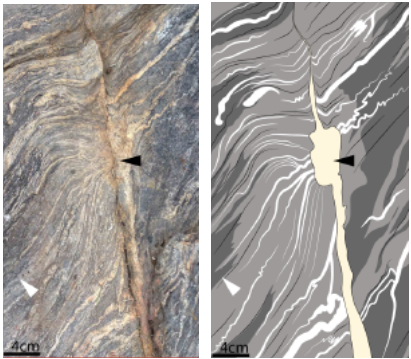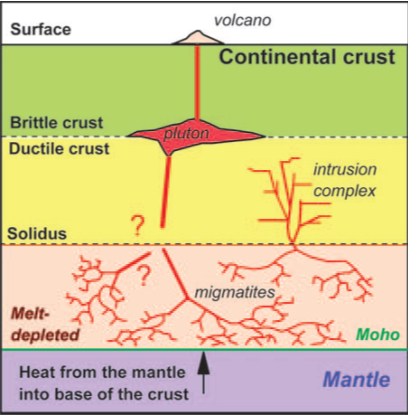Two-phase flow in rock-melt mixtures: Digging deep in the origins of Earth
- Academic lead
- Sam Pegler (Mathematics)
- Co-supervisor(s)
- Sandra Piazolo (Earth and Environment)
- Project themes
- Geological flows, Geophysical and Astrophysical Flows, Underpinning Methods for Fluid Dynamics
Exciting recent developments in Earth Science have instigated a paradigm shift in understanding the role of mush accumulation -- where rock exists as a combination of fluid magma and solid `grains’ -- in the crust and within volcanic systems. This project presents an extremely timely opportunity to address a series of new fluid-mechanical problems relating to the dynamics of mush systems, necessary to address exciting new analytical challenges spurred by these recent developments. The project would begin by developing and applying analytical, asymptotic and numerical mathematical approaches to understand how mush systems subjected to different forcing mechanisms generate heterogeneities: large-scale formations of localised structural properties (channel-like regions creating high-speed melt conduits, or localised expansions), through which melt extraction and migration can become focused and drain the neighbourhood of the crust (cf. a river basin). This will provide the pathway to explaining, for the first time, the basis for how molten rock form the Earth’s mantle can be extracted and driven through the Earth’s crust. The project will thereby address a key open question in the Earth Sciences, promising high-impact research and a longstanding influence on the field (recent papers in this general area have appeared in Science and Nature). Depending on student interest, the project can bridge primarily mathematical analysis or contain a stronger focus on geological application, thus allowing for considerable flexibility which can be steered by the student.

Figure 1: The structure of the Earth’s crust. The three layers of the Earth’s crust differ considerably in mechanical properties. Red indicated the molten rock extraction (red wiggly lines) from the rock-melt mixtures “migmatites” (pink) that eventually may feed volcanoes and generate the lower crust.

Figure 2: The structure of the Earth’s crust. The three layers of the Earth’s crust differ considerably in mechanical properties. Red indicated the molten rock extraction (red wiggly lines) from the rock-melt mixtures “migmatites” (pink) that eventually may feed volcanoes and generate the lower crust.
